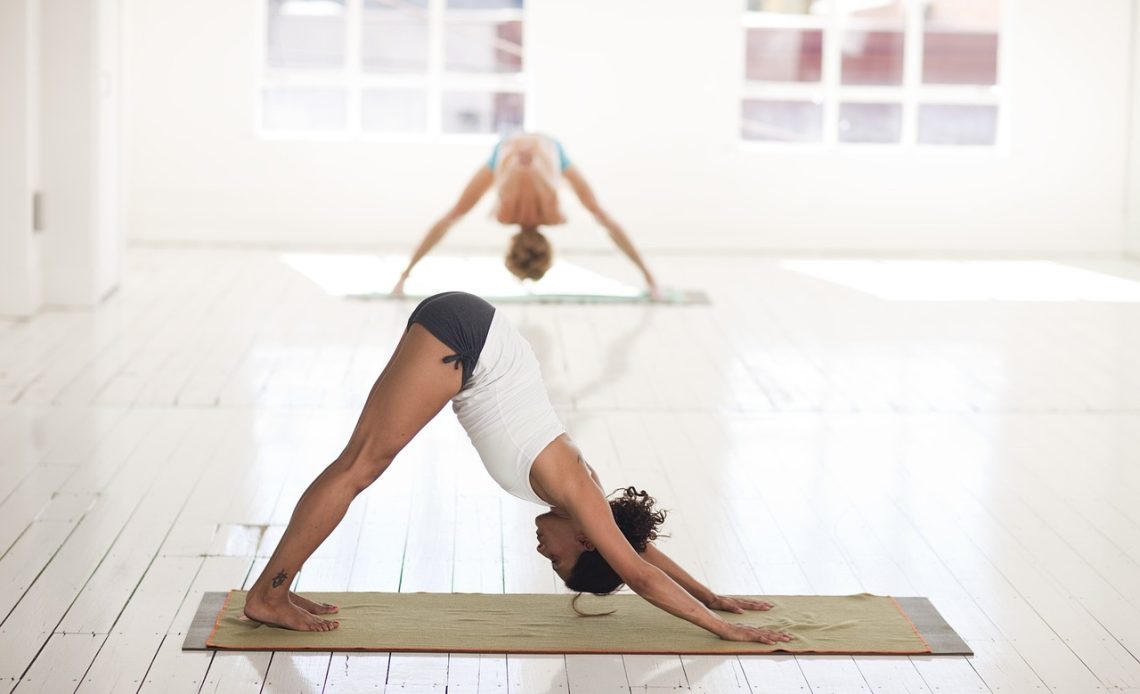
Introduction
Restorative yoga poses, although sometimes misunderstood, offer a wealth of benefits for practitioners. These poses provide a pathway to deep relaxation, healing, and rejuvenation. Far from the misconceptions, restorative yoga is not about pushing the body to its limits or engaging in strenuous workouts. Instead, it’s about nurturing your body and mind, and giving them the rest they need.
In this comprehensive guide, we explore restorative yoga, its significant benefits, and some of the best restorative yoga poses you can practice for ultimate relaxation.

Understanding Restorative Yoga
Restorative yoga is a unique practice that employs the use of props like blankets, bolsters, blocks, and cushions to support the body. This allows practitioners to hold poses for a more extended period, often ranging from 5 to 10 minutes. Unlike active yoga styles like Hatha and Ashtanga, restorative yoga offers no strenuous postures but allows your body to fully relax.
In essence, restorative yoga is a journey of personal discovery and healing. It’s an antidote to the fast-paced, high-stress world we live in, providing a respite for our bodies and minds. A Harvard study even found that individuals who practiced yoga for eight weeks slept better and longer than those who didn’t.
The Healing Effects of Restorative Yoga
Restorative yoga offers both physical and mental benefits. It is therapeutic, helping the body to rest and heal itself. It stimulates a healthy collaboration between the body and mind, strengthening the immune system, releasing muscle tension, and fostering balance in the nervous system.
Moreover, restorative yoga poses have a positive impact on stress, anxiety, and high blood pressure. They enhance blood circulation and stimulate the internal organs, making it an excellent tool for managing and preventing various health conditions.

10 Restorative Yoga Poses To Try
1. Child’s Pose (Balasana)
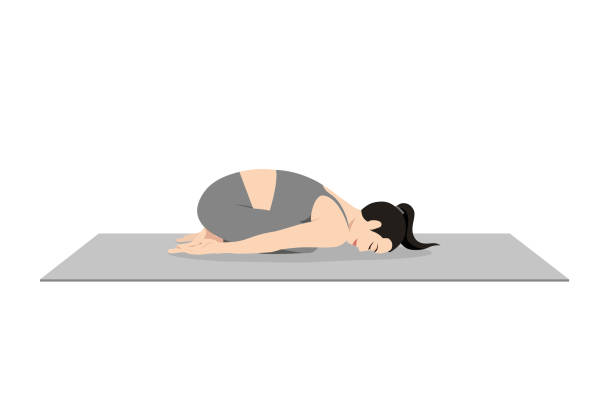
Child’s pose is a calming restorative pose that offers a gentle stretch to the spine. It is psychologically soothing, especially when feeling anxious or vulnerable.
How to Do Child’s Pose:
- Start on your hands and knees, your knees hip-distance apart.
- Sit back onto your heels, toes together, knees out wide.
- Extend your fingertips forward, allowing your chest to rest on your mat.
- Hold this pose for anywhere from 1 to 5 minutes.
Benefits of Child’s Pose:
- Quiets the mind and stimulates the parasympathetic nervous system.
- Relieves shoulder and back tension.
- Can be beneficial during menstruation cramps.
2. Supported Bridge Pose (Setu Bandha Sarvangasana)
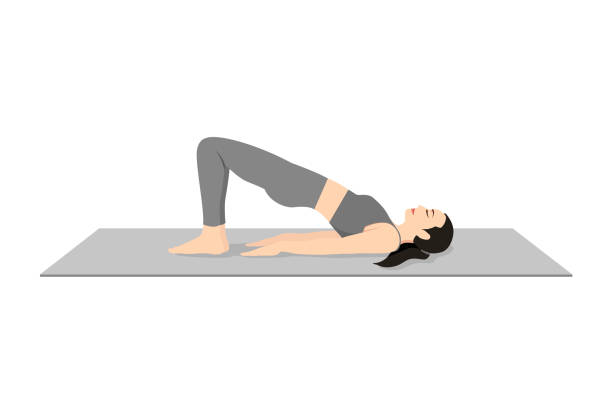
Supported Bridge pose is a gentle backbend that helps rest your heart and creates space for the diaphragms of the body to relax and move freely.
How to Do Supported Bridge Pose:
- Lie on your back with your knees bent, feet hip-width apart.
- Place a block under your sacrum (the large triangular bone at the base of the spine).
- Rest your arms alongside your body and use deep belly breathing.
- Hold the pose for 3-5 minutes.
Benefits of Supported Bridge Pose:
- Helps to rest your heart.
- Relieves lower back pain.
- Creates space for the diaphragms of the body to relax and move freely.
3. Supported Legs Up The Wall Pose (Viparita Karani)
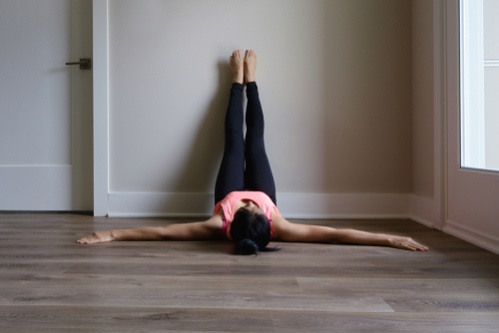
This pose is beneficial for so many things that every yoga student should do it regardless of experience.
How to Do Legs Up The Wall Pose:
- Sit with your right hip close to the wall.
- As you lay back, swing your legs up unto the wall.
- Adjust your body into the pose, allowing your legs to relax against the wall.
- Stay in the pose for 5-10 minutes.
Benefits of Legs Up The Wall Pose:
- Brings relief to the legs, feet, spine, and nervous system.
- Improves blood circulation.
- Regulates your respiratory system.
4. Reclining Bound Angle Pose (Supta Baddha Konasana)
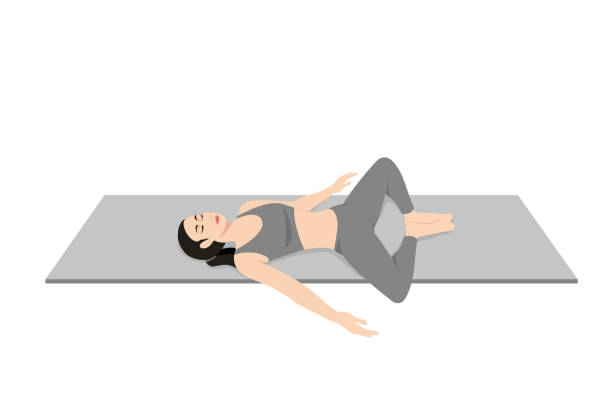
This is a deeply relaxing pose with numerous benefits.
How to Do Reclining Bound Angle Pose:
- Lay down on your back.
- Bend the knees and pull your knees as close to the pelvis as you can.
- Place the soles of the feet together and open your knees to the side.
- Open your arms to the side and relax into the pose.
Benefits of Reclining Bound Angle Pose:
- Increases blood circulation.
- Relieves the symptoms of stress, anxiety.
- Releases tight hips.
5. Thread the Needle Pose (Parsva Balasana)
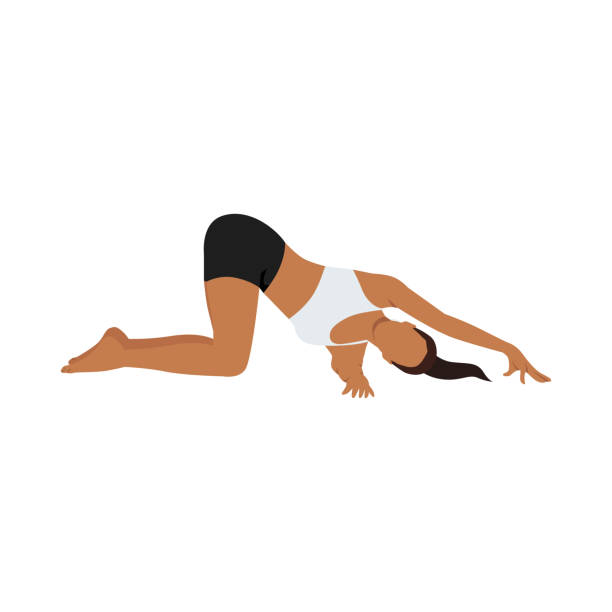
This pose offers a healthy twist to improve digestion and release shoulder tension.
How to Do Thread The Needle Pose:
- Start in the tabletop position (on your knees and hands).
- Slide your left arm forward and thread your right arm underneath until your shoulder and ear are on the mat.
- Hold this pose for up to a minute before pressing back into the tabletop position.
Benefits of Thread the Needle Pose:
- Relieves back tension.
- Detoxes the body.
- Relieves tension between the shoulder blades.
6. Supported Forward Fold (Paschimottanasana)
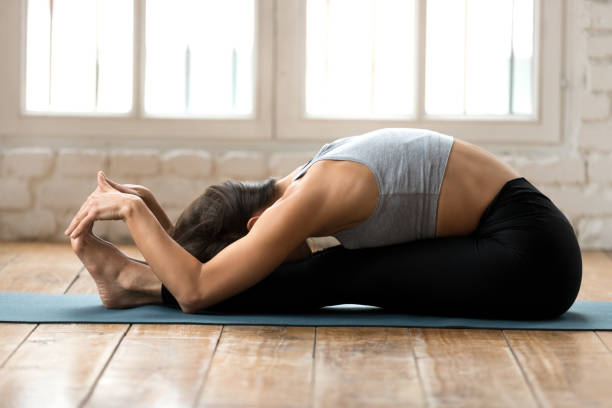
This pose has a deep and calming effect on the nervous system.
How to Do Supported Forward Fold:
- Sit with your legs straight.
- Lift your knees and place a rolled blanket under your knee caps to support your hamstrings.
- Place a bolster on your thighs and gently fold over the bolster.
- Hold the pose for 5-10 min.
Benefits of Supported Forward Fold:
- Calms the brain and helps relieve stress.
- Soothes headache and anxiety and reduces fatigue.
- Stimulates the liver, kidneys, ovaries, and uterus.
7. Sleeping Pigeon Pose (Eka Pada Rajakapotasana)
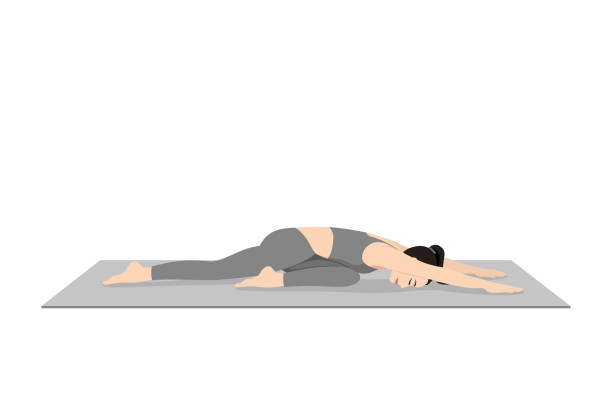
This pose offers an excellent stretch to the hip area, where much of our stress is stored.
How to Do Sleeping Pigeon Pose:
- Start on all fours in the tabletop pose.
- Guide your right knee up toward your right wrist.
- Extend your left leg long straight back behind you.
- Fold over your bolsters and go into deep belly breathing.
Benefits of Sleeping Pigeon Pose:
- Stimulates the internal organs.
- Opens up the hip joint and provides flexibility to the body.
- Offers an excellent stretch to the thighs.
8. Supported Fish Pose (Matsyasana)
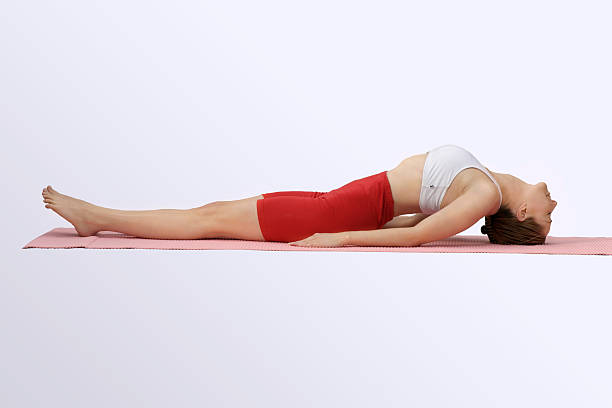
This is the most relaxing pose to end a restorative yoga sequence.
How to Do Supported Fish Pose:
- From a seated position, slowly lower onto the bolster.
- Place your feet together and open your knees.
- Externally rotate your arms so your palms face up.
Benefits of Supported Fish Pose:
- Stimulates the internal organs.
- Opens up the hip joint and provides flexibility to the body.
- Offers an excellent stretch to the thighs.
9. Savasana (Corpse Pose)
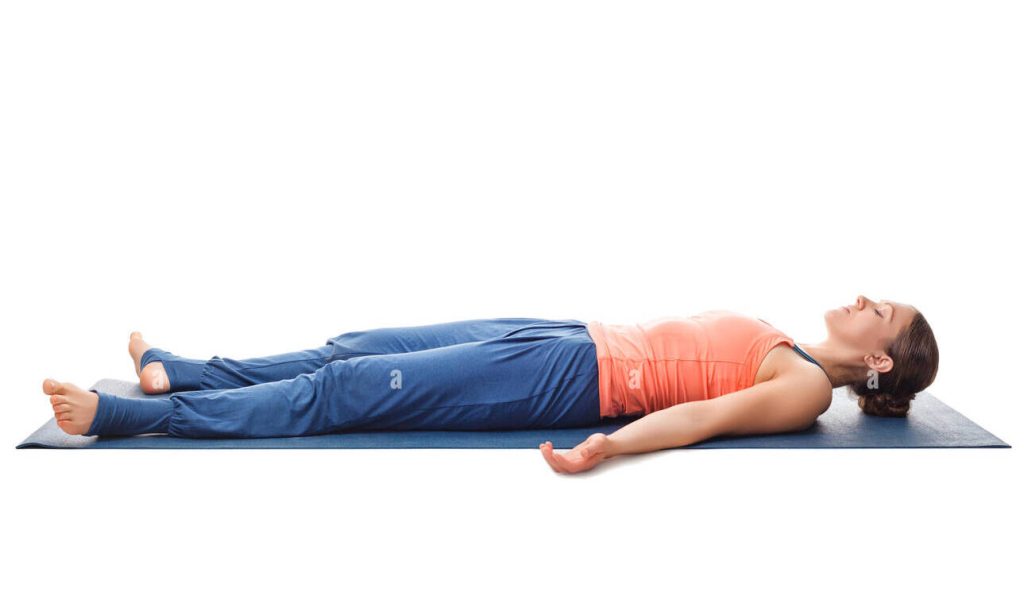
This is the ultimate pose for relaxation and stress relief.
How to Do Savasana:
- Lay down on your yoga mat.
- Place your legs long and feet hip-distance apart.
- Draw your shoulder blades together, so your shoulders can relax.
- Close your eyes and breathe normally.
Benefits of Savasana:
- Invites you to be still, calming the brain, relieving stress, and mild depression.
- Reduces headaches, whilst lowering blood pressure.
How to Start Practicing Restorative Yoga
The best way to start your restorative yoga journey is by attending a class. With the guidance of a yoga teacher, you will learn how to correctly align your body in the poses and how to use props effectively.
Whether you’re seeking to quiet your mind, tune into your body, or simply enjoy a good stretch, restorative yoga poses have something to offer. Incorporate them into your regular practice, and you’ll soon experience their transformative power.
Wrapping Up
Restorative yoga poses offer a pathway to profound peace and well-being. They soften our resistance to relaxation, helping us to release tension at the deepest levels. Regardless of your yoga experience, taking the time to practice restorative yoga poses is a gift to your overall health and well-being. So why not give it a try and see what it does for you?


